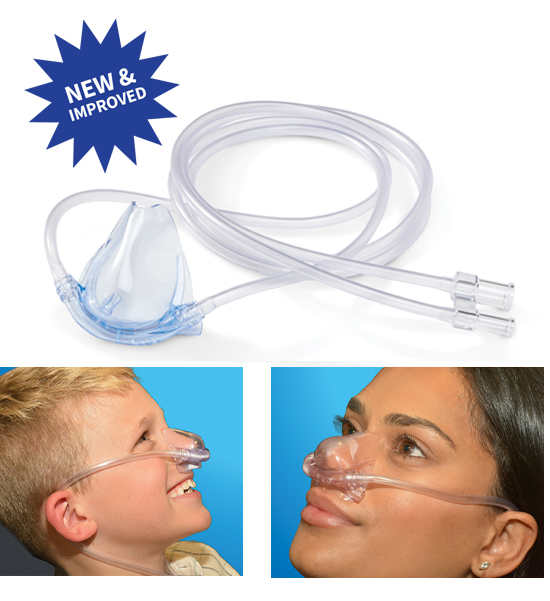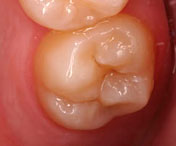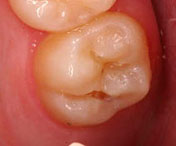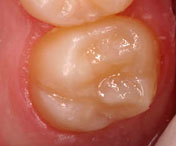GOT A TOOTH PROBLEM?
Not sure where to go for advice?
Cavities and toothaches are typically the most common dental problems however there are many more things that affect your oral health. Most dental problems often take people by surprise and sometimes result in an emergency dental appointment. At Dr Patrick Meaney & Associates we see our patients for a range of dental problems including:
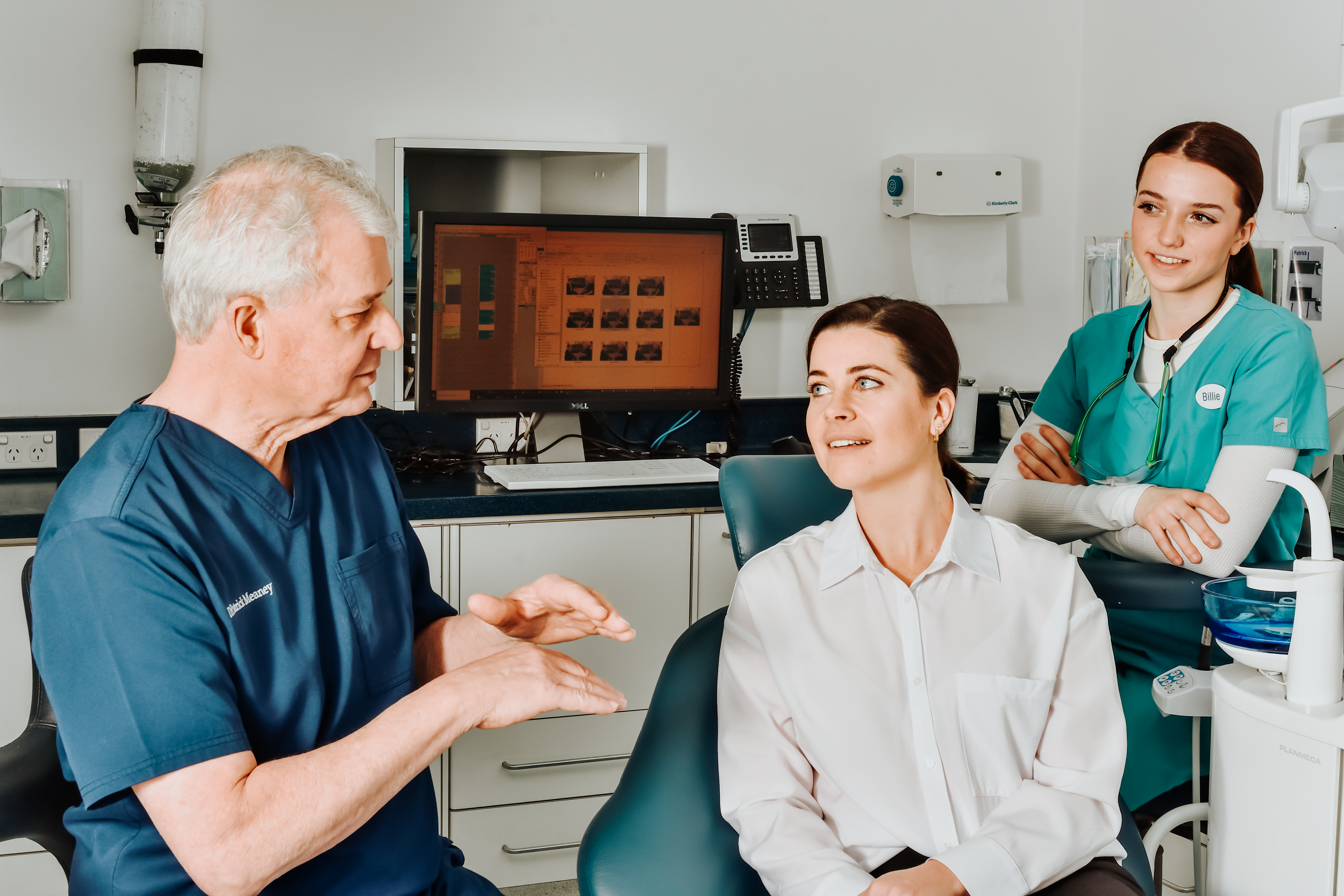
- Abscesses
- Accidents
- Anxiety
- Bridges
- Broken or chipped teeth
- Bruxism
- Cad-Cam Dentistry
- CEREC®
- Clenching
- Computer Teeth
- Cracked Tooth Syndrome
- Crowns
- Decay
- Discoloured Teeth
- Enameloplasty
- Extraction
- Excessive Wear
- Fissure seals and ‘Preventive Resin’ Restorations
- Grinding
- Laser Decay Diagnosis
- Microdentistry
- Pain
- Porcelain Veneers
- Reconstruction
- Replacement Dentistry
- Root Canals (Endodontics)
- Root Canal Therapy
- Sensitivity
- Sore Muscles
- Sore Jaw Joints
- Sore Teeth
- Temporomandibular Disorders
- Tooth Replacement
- Tooth Whitening
- Trauma
- Sensitive Teeth
- Wear
- Wisdom Teeth
Why dentists ask about your general health
Understanding your health issues helps us manage your overall dental health. The key to a healthy mouth is to understand that there is a link between what is happening in your mouth and the rest of your body. That’s just one of the reasons (there are more!), as your experienced dental team, we ask you about your general health.
If it has been 6 months or more since your last dental check up or clean or you are concerned about your dental health please call our friendly receptionist for an appointment (02) 4869 3111
What does a dental hygienist do?
Dental hygienists are University trained dental health professionals that play an important part in dental health care. They specialise in the prevention and treatment of gum disease and work alongside your dentist to help diagnose any dental issues that need addressing as well as providing a treatment plans designed to support you to keep your mouth healthy.
Many of you may know that the hygienist’s main role is to clean teeth, known as ‘scaling and polishing’. This is the removal of soft plaque deposits and the hard buildup of tartar followed by a polish to remove any stains and leave the teeth feeling fresh and smooth.
At Dr Patrick Meaney & Associates, we have highly qualified and dedicated dental hygienists to help you keep your teeth for life! Visit one of our dental hygienists or Moss Vale dentists for a dental check up and cleaning.
Mouthguards
So, you’ve registered for your winter contact sports, paid your fees for insurance and you have a uniform organised. But do you have your Mouth Insurance? A well-made mouthguard that fits properly is a must for any contact sport! It’s like insurance for your teeth!
We require an appointment to take 2 impressions to allow the mouthguard to be comfortable during play – we make sure your bite is correctly adjusted. At the second appointment, we’ll issue your mouthguard and ensure that it fits properly and is comfortable. Finally, we can also put your mobile number or name in the mouthguard, so you won’t lose it.
All mouthguards are supplied with a mouthguard container to keep your precious guard safe when not in use.
Sedation Dentistry
Sedation options at our office
If you find dental procedures unpleasant or challenging, we like to start by establishing a good relationship with you, to understand your needs. We make sure we always talk to you before even picking up an instrument; we ask you about your past experiences: what makes things better and perhaps what you don’t like about dental treatment.
In this way we hope to gain an understanding how to create an environment where you are comfortable, and you can obtain the necessary treatment to keep you healthy. If we decide that sedation will assist you in achieving your dental goals there are different options.
Sedation options will vary depending on your needs, and the complexity of the procedures we plan to do. Here are some common sedation options used in our office at Moss Vale:
Latest dental technology
We’re excited to bring the latest dental hygiene technology to Dr Patrick Meaney & Associates. Find out how Swiss-Made EMS AIRFLOW® and a Guided Biofilm Therapy treatment can benefit your smile.
The AIRFLOW® is an innovative dental hygiene method that uses a gentle, non-contact approach to effectively remove food particles, plaque, and stains from teeth and hard-to-reach areas. By projecting a controlled stream of warm water and fine powder onto the tooth surface, it offers a faster and more comfortable cleaning experience compared to traditional pastes.
When using the AIRFLOW® Prophylaxis Master device, firstly our hygiene team will place a coloured dye onto your teeth to reveal any plaque and biofilm present in your mouth. guiding the cleaning process for better oral health.
New Dental Technology
Cad-Cam Dentistry is a way to use computers to make crowns, bridges, inlays, onlays, and veneers-in fact, you can make a wide range of replacement parts for a host of different applications.
CAD stands for ‘computer-aided-design’ and CAM stands for computer-aided-manufacture’. There are some things humans do really well, and other things machines do so much better. Computers make dental ceramic restorations quicker, with more accuracy and precision than is possible using old-fashioned methods. Dental technicians can also use Cad-Cam to make their lives easier. It’s now possible to manufacture all-porcelain bridges using Cad-Cam. A range of other procedures that either took longer or were difficult or impossible to complete by hand can also now be undertaken using computers and dental milling instruments.
For more information, see CEREC®.
Dental imaging
We use different imaging systems to ensure we have a really good understanding of what is going on in your mouth at any point in time.
The most common dental x-ray is called a bitewing.
Bitewing x-rays are a type of dental radiograph used to capture images of the upper and lower back teeth (molars and premolars) in a single view. They are called "bitewing" x-rays because traditionally you bite down on a wing-shaped tab or holder to keep the digital sensor in place during the dental imaging process. Here's a breakdown of their use in dentistry:
They are very useful for a variety of reasons.
Here are the top six reasons why bitewing x-rays are an absolute necessity for our patients:
- Finding cavities (or ‘Dental Caries’
Bitewing X-rays are primarily used to detect dental caries (cavities) between the teeth. Inspired of magnification and excellent modern lighting systems it still impossible to see some cavities without x-rays. Bitewing x-rays are particularly useful for detecting ‘flossing cavities’— where dental floss should go between teeth is a commonplace the decay to develop. There are also useful for detecting cavities in the biting surfaces of back teeth.Bitewing X-rays can reveal early signs of decay that may not be visible to the naked eye.
- Assessment of Existing Restorations
We also use bitewing x-rays to help assess the integrity of existing dental restorations such as fillings, crowns, and bridges. Bitewing x-rays are really useful for checking signs of decay that has formed around existing restorations and they help detect any other problems that may cause your existing fillings to fail. - Evaluation of Periodontal Health
Bitewing x-rays can provide valuable information about the health of the supporting structures of the teeth, including the bone level and presence of periodontal (gum) disease.Changes in bone density and height can be observed on these X-rays, aiding in the diagnosis and monitoring of periodontal conditions.
- Orthodontic Treatment Planning
Bitewing X-rays may be used as part of the diagnostic process for orthodontic treatment planning. These X-rays help orthodontists assess the alignment and position of teeth, as well as the relationship between the upper and lower jaws. - Monitoring Dental Development
In paediatric dentistry, bitewing x-rays are used to monitor the development of permanent teeth and assess eruption patterns. These x-rays can help identify potential issues early on, allowing for timely intervention if necessary.
- Screening for Other Dental Conditions
Bitewing x-rays can also aid in the detection of other dental conditions such as impacted teeth, dental infections, and abnormalities in tooth structure or anatomy.
Overall, bitewing X-rays play a crucial role in comprehensive dental examinations, allowing us to diagnose dental problems accurately and develop appropriate treatment plans tailored to the individual needs of each patient. We take bitewing x-rays only when necessary; this varies depending on your risk of developing decay which we assess during your initial examination and in an ongoing basis during your hygiene maintenance appointments.
Other types of x-rays that we take
When we perform root canal therapy, and some other procedures we might take single x-rays that show the roots of teeth. Dentists call these views ‘periapical’ — ‘peri’ comes from the Greek meaning around, and apical comes from Latin meaning ‘the tip; so these x-rays are taken around the tip of the root.
Oral surgeons prefer the orthopantomogram to assess third molar impaction. We also use a really modern imaging modality called cone beam computed tomography (‘CBCT’).
These 3D x-rays help us to detect hidden abscesses, assess bone levels in disease and health and give us a whole new way of looking at our patients.
Radiation Dose
We are often asked whether x-rays are safe. We think they are, but let’s look into it in a bit more detail:
The dose of radiation from a bitewing x-ray is typically measured in millisieverts (mSv).
It represents one thousandth of a sievert, which is the unit of measurement for the effective dose of ionizing radiation received by the human body. We are all exposed to background radiation every day, typically about 4 microsieverts.
The symbol for microsievert is µSv. It represents one millionth of a sievert.
A single bitewing X-ray exposes the patient to a very low dose of radiation, typically ranging from about 5 to 10 mSv per image. Therefore, the radiation dose from a single bitewing X-ray is significantly lower than the background radiation dose received over the course of a year.
Here are some comparisons with other activities:
- Eating a banana: about 0.1 microsieverts
- Dental x-rays: about 10 or less microsieverts
- Flying from Darwin to Perth: 16 microsieverts
- Medical chest x-ray: 20 microsieverts
- A flight from London to Melbourne: 42 microsieverts
- A cone beam 3D x-ray: less than 80 microsieverts
- Average annual background radiation in Australia: 1500 microsieverts
- Medical chest x-ray: 7000 microsieverts
It's important to note that the actual radiation dose can vary based on factors such as the type of X-ray machine used, the settings we select, and the size and composition of the your body. However, dental x-rays, including bitewing X-rays, are considered to be safe and effective diagnostic tools when used appropriately and in accordance with recommended guidelines for radiation exposure in dentistry.
Bruxism
The word bruxism is used to describe what happens when you clench or grind your teeth together-usually when you’re asleep, but you can also do it while awake. Another dental term that means the same thing is ‘parafunction’. Parafunction is loosely defined as doing things with your teeth other than eating, talking, or smiling.There is no widely-accepted reason to explain why you might do this, but recent research suggests a link with disturbances in patterns of sleep, and may be related to the causes of sleep apnoea. In some people, parafunction is a habit, like using worry-beads or chewing pens and pencils or biting nails.
Others do it when they’re awake but are completely unaware that they do. A partner might tell you they can hear you grinding your teeth while you sleep; someone might notice a repetitive movement of your jaw as you grind while awake. Dentists can tell if you have this habit when we see excessive wear, chipping and fracturing of your teeth.
In the past, dentists believed you could ‘cure’ bruxism by adjustments to patient’s bite. Other groups of dentists supported the idea that complex dental interventions to completely ‘reconstruct’ a whole mouth would prevent problems. While this might be a good idea for some people with extensive wear, it doesn’t stop people bruxing. The truth is still unclear about exactly what might work to prevent us from doing this. What is true is that trying to stop the habit when you’re awake and attempting to protect your teeth when you sleep does work to prevent damage.
It’s important to know if you brux or not: apart from excessive wear, fillings can fracture, as so can your teeth. You can chip porcelain crowns and veneers, and you can develop acute pain as a result of clenching too much. That’s why, during your initial assessment and examination, we’ll look for signs that you might be ‘parafunction’ with your teeth.
Bridges are used if you have lost a tooth; they are a way to replace a missing tooth or teeth.
New Dental Technology change title to Cad-Cam Dentistry
Cad-Cam Dentistry is a way to use computers to make crowns, bridges, inlays, onlays, and veneers-in fact, you can make a wide range of replacement parts for a host of different applications.
CAD stands for ‘computer-aided-design’ and CAM stands for computer-aided-manufacture’. There are some things humans do really well, and other things machines do so much better. Computers make dental ceramic restorations quicker, with more accuracy and precision than is possible using old-fashioned methods. Dental technicians can also use Cad-Cam to make their lives easier. It’s now possible to manufacture all-porcelain bridges using Cad-Cam. A range of other procedures that either took longer or were difficult or impossible to complete by hand can also now be undertaken using computers and dental milling instruments.
For more information, see CEREC®.
Crowns
A Crown is a specialised filling that covers a tooth. Called ‘caps’ in the USA, crowns have been used for more than a hundred years to restore teeth. Today there are more than 20 different types of crowns dentists can use. Gold was a common material used in crown manufacture and it’s still used today, where it is usually covered by a layer of porcelain. Most crowns can be made from high-strength dental ceramics, so they look and feel just like your own tooth.
You will need a crown if you have a root canal therapy, or your own tooth has fractured, or if you have a really big cavity.

CEREC® is the acronym for one Cad-Cam dental system sold by Sirona Dental Systems. The letters represent Chairside Economical Restoration in aEsthetic Ceramic.
Cerec restorations are made using a ‘millable’ dental porcelain to manufacture crowns, onlays and veneers in a single appointment. Here’s how:
Step 1
Old fillings and decay are removed; your tooth is gently shaped and smoothed
Step 2
An image of the tooth is captured by a specialised camera
Step 3
Your new filling is designed with the aid of a ‘library’ of images and designs available within the Cerec software
Step 4
The Cerec computer sends instructions to a milling unit which manufactures the finished restoration. This only takes the machine about 10 minutes.
Step 5
The polished ceramic is bonded to your tooth, making it strong and comfortable once more.
But what's in it for you?
Here’s a comparison of old and new crown method:
Q: Are there any special precautions with my temporary filling?
Remember it isn’t as strong as a definitive restoration. Don’t try to pull floss up out of the space between this tooth and an adjacent tooth until your final restoration is completed. Brush normally, and avoid things like Minties™.
Old Crown Method |
New Crown Method |
| Smooth and prepare tooth | Same |
| Impressions of both jaws and tooth with rubbery stuff | Get a video image of your tooth |
| Wait while the dentist makes you a temporary plastic crown | Read a newspaper, have a snooze, go for a walk for 10-15 minutes |
| Impression sent to a dental technician | Design and mill the crown |
| Wait 1-2 weeks | Bond the crown, dental treatment complete |
| Second appointment, second injection, cement the crown | |
| Two appointments with impressions and temporary crowns | Summary: Single appointment, no yucky dental impressions |
Cracked Tooth Syndrome
Cracked Tooth Syndrome is a collection of symptoms caused by a fracture in a tooth. 99.999% of the time, the culprit is an existing filling, although if you brux you can crack your own unfilled tooth. The most common filling material in fractured teeth is silver alloy or amalgam. An ‘amalgam’ is a mixture of mercury and a silver/tin alloy (with other trace metals). Although these alloys were improved in the 1970s, silver used in earlier decades was susceptible to a number of problems that only show up after years in use. One of these is a fracture pattern that starts internally and can take months to progress to a broken tooth.
As the fracture progresses microscopically, you might experience sensitivity to cold, particularly with cold drinks, or cold air in winter. With further development, your tooth might become sensitive when you eat, typically when you try to chew something tough (meat, nuts, hard candy, ice). Cracked tooth syndrome is a very distinctive pain on chewing: it can be exquistely painful—but the pain has an extremely short duration, and doesn’t last.
It can be very difficult to diagnose exactly which of your teeth tooth are fractured. Occasionally there can be multiple teeth that have the same problem, and it’s very common to have more than one fracture in a single tooth. Some fractures are ‘favourable’—and others can cause you to lose your tooth.
Treatment varies from onlays to crowns and root canal therapy, depending on where the crack ends.
Enameloplasty
Enameloplasty is a method of making tiny changes to your teeth by altering your tooth enamel. Tooth enamel is ‘insensitive’, so these changes don’t hurt and don’t take long.
Most of the time the changes make your teeth look better—like eliminating points, irregularities or smoothing small fractures on front teeth. Enameloplasty can also relieve the discomfort of rough teeth and can be used to effect minor alterations in occlusion.
Dental Implant Maintenance: Why and How
Your dental implants are a valuable investment in your smile and overall oral health. Just like your house or car or even your own teeth, they require proper care and maintenance to ensure they last a lifetime.

The Importance of Dental Implant Maintenance
Dental implants are renowned for their durability, functionality, and natural appearance. However, without proper maintenance, even the most well-planned implant rehabilitation can encounter problems over time. Here's why maintenance matters:
Preservation of Oral Health: Maintaining good oral hygiene is crucial for preventing complications such as gum disease and peri-implantitis, which can jeopardize the stability of your implants. If we can’t see it we treat it, so it’s important for you to keep up your appointments. If you give us your permission, will make sure you never miss a hygiene maintenance appointment and your implants will stay healthy.
Longevity of Implants: Regular maintenance helps identify and address any issues early on, prolonging the lifespan of your dental implants and avoiding costly repairs or replacements down the line.
Protection Against Complications: By adhering to the maintenance routine we have prescribed for you, you’ll minimize the risk of implant-related complications and ensure optimal oral health and function.

Features of Dental Implant Maintenance
Now that we understand why maintenance is essential, let's explore key features of an effective dental implant maintenance regimen:
Regular visits are a key ingredient for dental implant health. For the first three years following your implant placement we recommend using x-rays to ensure your bone health is optimal. We combine that with thorough examinations and professional cleanings to keep your implants in top condition. As the years go by, we may suggest radiographic surveillance especially if we notice any changes in your soft tissue. This normally involves simple x-rays to monitor soft tissue and bone levels around your implants.
Daily Oral Hygiene: Just like natural teeth, dental implants require daily care to remove plaque and bacteria. Brushing at least twice a day with a soft-bristled toothbrush and using interdental brushes or floss to clean between implants can help prevent gum disease and maintain oral health.
Specialized Cleaning Tools: we may recommend specialized cleaning tools such as interdental brushes, floss threaders, or water flossers to effectively clean around implants and prosthetic restorations.
Avoidance of Harmful Habits: Certain habits such as smoking and excessive alcohol consumption can compromise the success of dental implants. Avoiding these habits and maintaining a healthy lifestyle can contribute to the longevity of your implants.
Customized Care Plan: Every patient's needs are unique, and we have planned for a long future for your dental restorations . We develop a customized maintenance plan tailored to your specific oral health goals and circumstances.
By incorporating these features into your dental implant maintenance routine, you can ensure the longevity and success of your implants for years to come. Remember, proactive care is the key to preserving your smile and enjoying the benefits of dental implants for a lifetime.

Tooth Extractions
Tooth Extractions are the last thing we normally provide for our patients. But sometimes it’s the best treatment. Crowded teeth, wisdom teeth and extra teeth need to be removed. Trauma, or extensive decay can mean an extraction is the ideal treatment. Occasionally a tooth with severe periodontal disease cannot be kept or helped with periodontal therapy and requires extraction. If you need to have a tooth removed, I’ll provide instructions and help to plan for before and after. As for all prescribed treatment offered by me as a registered experienced health practitioner registrant, all patients are free at all times to seek a second opinion from another practitioner. Often on examination and after discussion, I will make clear to you that you may seek or should seek a second opinion for any and all treatment. For some people, specialist referral to an oral/maxillofacial surgeon is a desirable choice. If you would like to download a copy of our instructions for surgical procedures including extractions, please click here.
Fissure seals and Preventive Resin Restoration
Fissure seals and Preventive Resin Restoration (‘PRR’) therapy are used when fissures in back teeth develop so they trap plaque and bacteria, causing decay and cavities. These cavities are so small, we need to use extremely small diamond-coated instruments to remove a thin layer of enamel to ensure all decay is exposed and removed. Once we are sure the surface of the tooth is healthy, tooth-coloured resin is securely bonded to repair the defect. These restorations can be expected to last many years, and are a wonderful way to protect the grooves in back teeth from biscuits, sticky foods and attack from sugary drinks.
These images show an upper molar before preparation, with the cavity prepared, and with the bonded resin restoration in place.
SCHEDULE AN APPOINTMENT TO VISIT OUR MOSS VALE DENTIST

